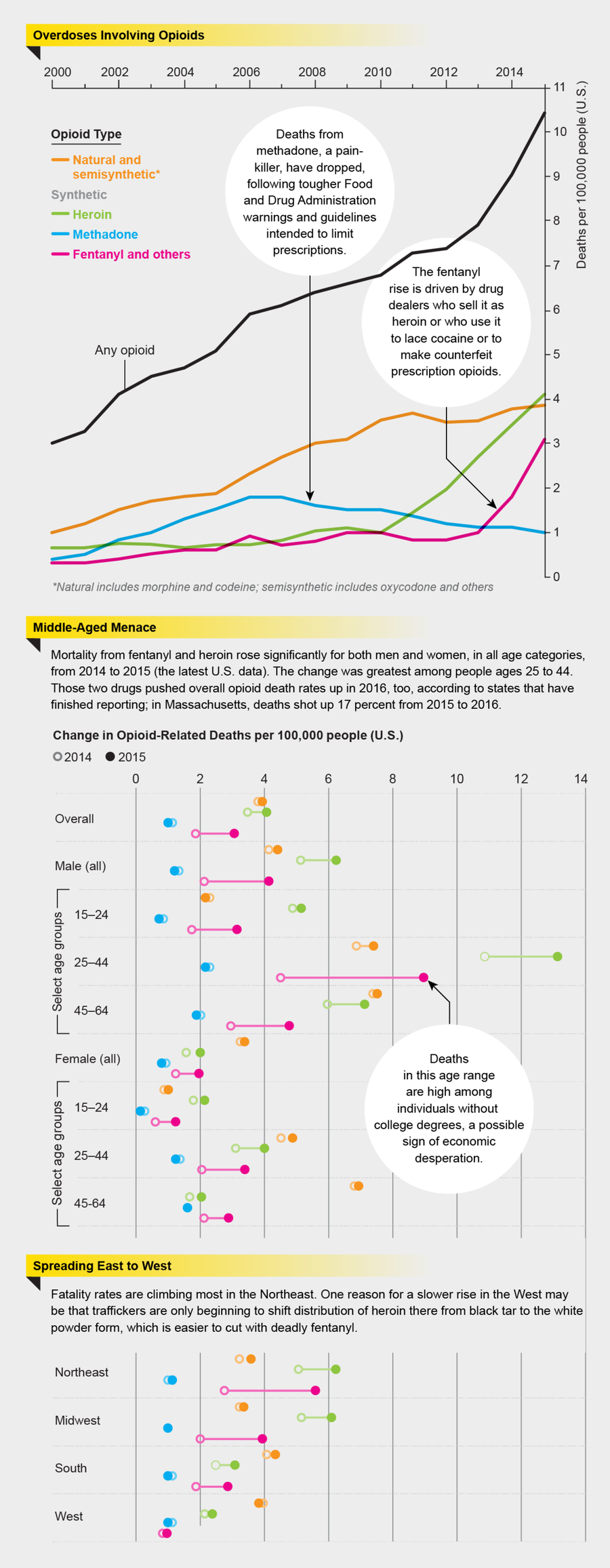On supporting science journalism
If you're enjoying this article, consider supporting our award-winning journalism by subscribing. By purchasing a subscription you are helping to ensure the future of impactful stories about the discoveries and ideas shaping our world today.
U.S. deaths from drug overdoses have skyrocketed since 2010 (line graph). Entire towns in states such as Ohio are being ravaged. In August an interim report from a Presidential Commission on the crisis described the toll as “September 11th every three weeks.” According to the U.S. Centers for Disease Control and Prevention, two trends are driving the epidemic: “a 15-year increase in deaths from prescription opioid overdoses” and a recent surge in “overdoses driven mainly by heroin and illegally-made fentanyl.” Rates are higher among men and women in virtually all age groups and regions of the country (second and third charts). Data released by the CDC also show that drug overdoses were up by at least 15 percent in the first three quarters of 2016 compared with the same period in 2015. Police reports indicate that the escalation is mostly from heroin and fentanyl; nationwide, seizures of fentanyl alone more than doubled, from 15,209 in 2015 to 31,700 in 2016.

Credit: Jen Christiansen; Sources: Division of Unintentional Injury Prevention, National Center for Injury Prevention and Control, Centers for Disease Control and Prevention www.cdc.gov/drugoverdose/data/analysis.html (line graph); “Increases in Drugs and Opioid-Involved Overdose Deaths—United States, 2010–2015,” by Rose A. Rudd et al., in Morbidity and Mortality Weekly Report, Vol. 65, Nos. 50–51; December 30, 2016 (demographic breakdowns)